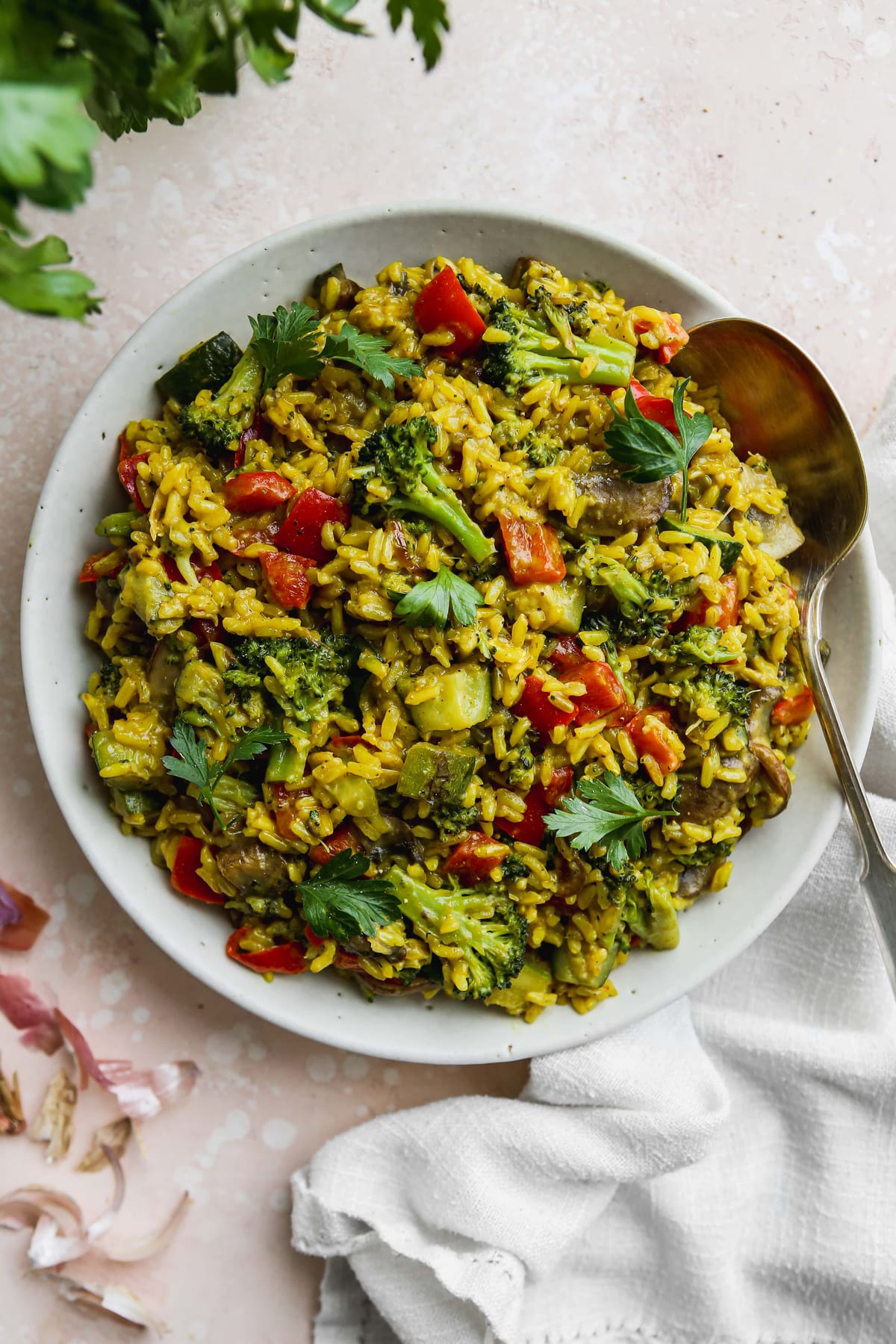Creamy Coconut Curry with Vegetables

Home cooks looking for a meal that balances warmth and richness often turn to coconut-based curries. Whether you crave a soothing dinner after a busy day or aim to introduce fresh, vibrant flavors at a family gathering, a coconut curry checks the right boxes. The velvety nature of coconut milk contrasts beautifully with a range of earthy spices, yielding a hearty dish that’s simultaneously comforting and bold. While many people associate curries with elaborate techniques, this version proves it can be both accessible and deeply satisfying, even for those new to making sauces from scratch.
Coconut milk lies at the heart of the sauce, contributing a creamy texture without relying on dairy. Data from the U.S. Department of Agriculture notes that coconut milk contains fats that help deliver a smooth, mellow consistency. Though it can be rich, the point here isn’t to overpower the dish with heaviness. Instead, just enough coconut milk is blended with spices and aromatics to form a balanced foundation. For extra lightness, some cooks choose reduced-fat coconut milk, though the full-fat variety typically leads to a more luscious end result. Finding the right ratio depends on personal taste—some prefer a thicker sauce that clings to vegetables, whereas others choose a slightly thinner sauce for easy spooning over rice.
At the center of many curry recipes sits a blend of spices and herbs that set the overall tone. Garlic, ginger, and onions form the basic aromatic trio, introducing pungency and sweetness. A typical seasoning might include coriander, cumin, and turmeric, though curry powder or a garam masala blend can offer a one-step approach for newcomers. More adventurous cooks might toss in a few crushed cardamom pods or a dash of fenugreek seeds for added complexity. The result is an aroma that quickly fills the kitchen, hinting at the richness to come. Regardless of which spices you choose, gently toasting them in oil before adding liquid can intensify their fragrance, coaxing out layers of flavor that raw spices can’t match.
Vegetables bring freshness, color, and variety to the dish. Options might include bell peppers, sliced into neat strips for crunch, or cauliflower florets that soak up the sauce’s essence. Carrots, zucchini, and even mushrooms play well here, each adding distinct textures. The key is cutting them into similar sizes so they cook at relatively the same pace. Some prefer to sauté these vegetables lightly in oil to seal in flavor, while others add them directly into the simmering sauce. The approach you pick can depend on how crisp or soft you want them to be. Typically, vegetables can remain in the sauce for ten to fifteen minutes, softening to a pleasant tenderness without losing their shape.
Bringing everything together demands a bit of layering. Often, the process begins by sautéing onion in a bit of oil, followed by ginger and garlic, just until they release their aroma. Next, the spices or curry blend enter the pan, blooming in the residual heat. A quick stir prevents scorching and ensures the base forms a cohesive paste. At this point, the coconut milk pours in, blending with the seasonings to form a lightly tinted sauce. Once it warms, you can slip the vegetables into the simmering mixture. Covering the pan briefly helps expedite cooking, letting the ingredients bathe in the spiced coconut sauce. Stirring occasionally keeps things uniform and prevents any section from overcooking at the bottom.
Some prefer adding a splash of vegetable broth or water if the sauce tightens too quickly. This technique also thins the mixture if a lighter consistency fits the meal plan. A small pinch of sugar or a drizzle of honey can offset any bitterness from certain vegetables, though one must be cautious not to produce an overtly sweet curry. For home cooks who enjoy more heat, a minced chili or a pinch of chili flakes can heighten the spice level. Meanwhile, a half teaspoon of salt or a quick tasting typically reveals whether additional seasoning is needed. With a pot like this, layering in small increments is safer than over-salting from the start.
As the vegetables finish cooking, the sauce often transforms into a sumptuous, cohesive blend, thick enough to coat each piece thoroughly. A gentle swirl of lime juice toward the end can cut through the richness, brightening every spoonful. Others choose a final sprinkle of fresh cilantro or Thai basil, reinforcing the dish’s herbal side. Serving the curry over steamed rice remains the classic approach, though flatbreads or noodles can also welcome the sauce. For an extra flourish, some cooks toast shredded coconut or sesame seeds for garnish, lending texture and visual contrast.
If leftovers remain, they typically improve in flavor overnight. The sauce melds further, and vegetables absorb more spiced notes. Refrigerating in an airtight container for up to a couple of days keeps the curry intact, making for a quick reheated lunch. On the second round, you may add a new vegetable or a sprinkle of fresh herbs to revive the vibrancy. Should you prefer a protein boost, cooked chicken chunks or firm tofu cubes can slip into the pot seamlessly, mirroring the method used for the vegetables. Each adaptation underscores how flexible coconut curry can be, fitting a variety of tastes or fridge inventories.
Ultimately, a coconut-based vegetable curry underscores the idea that comfort and dynamism can coincide in a single bowl. Its soothing textures and gentle warmth relax the senses, while underlying spices awaken the palate. Beginners appreciate the forgiving nature of coconut milk, which neutralizes minor seasoning slip-ups, and culinary veterans relish the chance to refine each step—tweaking chili intensities, adjusting the cooking times for different vegetables, or experimenting with new herb additions. At day’s end, the dish stands as evidence that a modest set of ingredients can yield a depth of taste that resonates well beyond the final bite.
